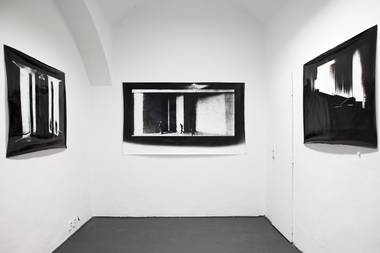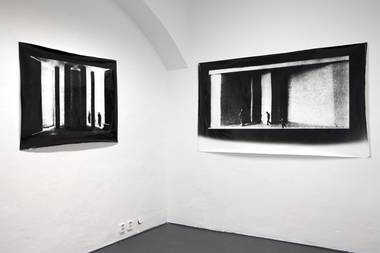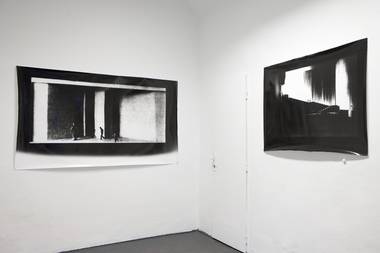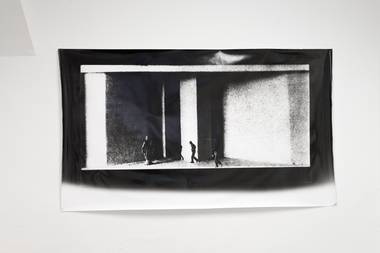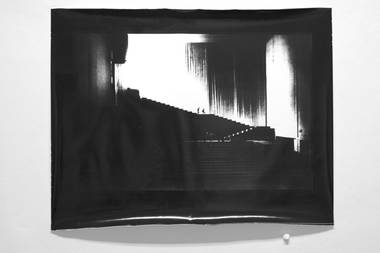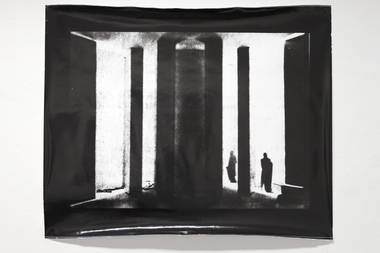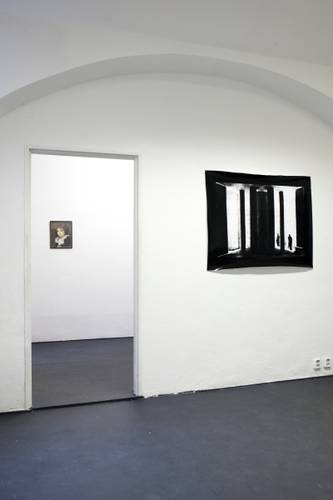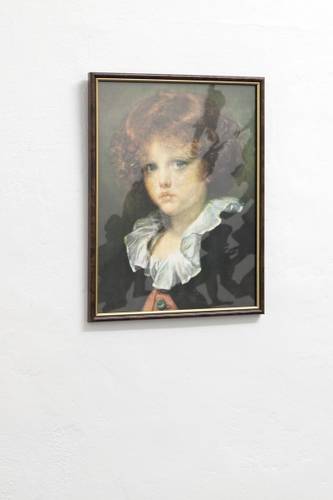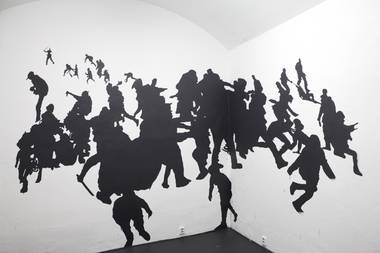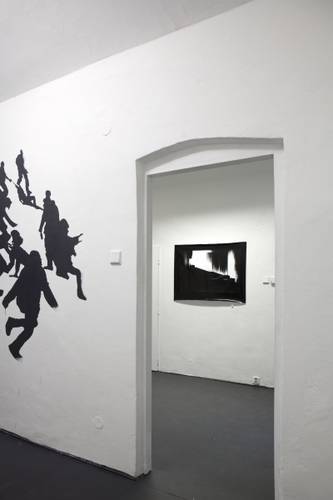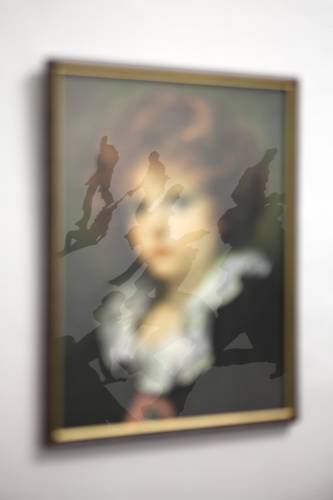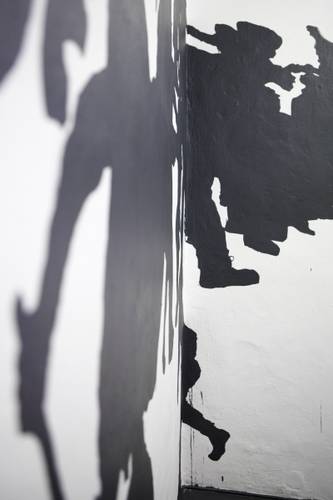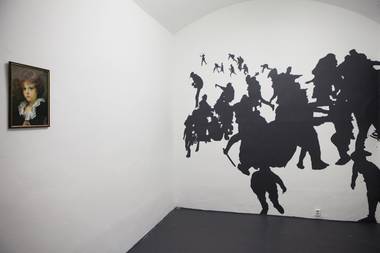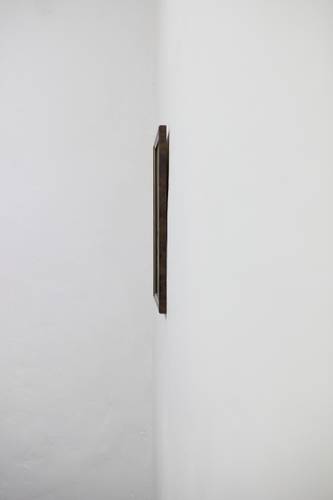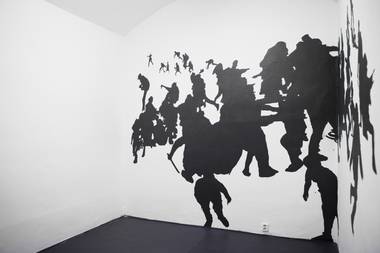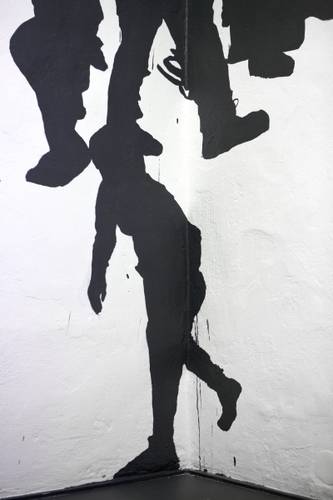Martin Prudil: Man As a Scale
9. 9. – 1. 10. 2015
opening: 8. 9. 2015
curator: Václav Magid
We need models (just like schemes or plans) to understand a certain situation. Benchmark on the other hand, helps us to understand the model itself; in fact, it enables us to guess the proportion of the model compared to what it depicts. Model, however, unlike a map which copies the outline of an existing territory, depicts reality which doesn´t exist yet, and should be created according to the model. Model is a part of a project of a certain future. It is not an instrument of depiction, but of construction.
However, a new reality can´t be formed out of nothing. We must use elements of reality which already existed before us. During the act of construction we reduce the diversity of objects and qualities that exist independent of us (objectively) to a mere matter or raw material which we form based on the model. The simpler the model, the more elegant the process of construction; it involves a smaller number of steps which can be better organized. Effectiveness is directly proportional to the extent of reduction. The best way is to start with several basic pairs of opposites: horizontal/vertical, right/left, black/white. Thus when forming a model we have to abstract from the partial peculiarities of the material. We straighten what´s crooked; we separate solid from liquid using a sieve; we enhance the contrast of shades of grey until we get two extreme positions and we don’t worry about color.
The diversity of reality is thus wiped away by the power of abstraction which, as we have seen, is based on the practical requirement to make our activity simpler; this requirement is then embodied in our basic instinct – the instinct of self-preservation. After all, the very principle of construction germinates there; instead of giving in to uncontrollable attack of outer elements, it is better to create a reality which is better adapted to our needs. If our life is at risk, we can´t afford to distinguish between smaller and bigger, real or illusory danger lurking out there, let alone to search for a solution to every individual situation with maximum respect to the outer reality. The safest thing is to just eliminate the danger: either we or they.
This way we find ourselves in a reduced world of horizontals and verticals, black and white, where all the shades and specifics of the material are wiped away. Our creation has lost the link to the matter in which it was realized which results in the loss of our ability to understand the construction itself. We can´t see the purpose for which the model came into existence any more, and why it looks as it does. It lacks purpose for us – it becomes absurd. In the end it turns against us. We have not only eliminated the external with all its (real and alleged) threats, but at the same time we have quashed part of ourselves. If we reduce our actions to succumbing to the instinct of self-preservation, it is not clear what exactly we want to preserve. Instead of showing our power and spreading our possibilities, we exhaust ourselves by the constant removing of excess material which couldn´t be squeezed into the model. The repression of all strange and incomprehensible things, which seemed justified by the fight for survival, has changed into a total repression in which we transform ourselves into an operator keeping the abstraction machine in motion.
The benchmark works as the very corrective against abstraction by which models are characterized. It makes us take the difference between model and reality into account, and thus keeps the questioning about the meaning of model alive. If the benchmark is to fulfill this role it must be in a fundamentally different relation to objective reality than the model. It is not the relation of a construction, but of imitation. Through the benchmark the exterior returns to the model. It is a piece of matter which reminds us of the injustice caused to the matter by man by his constructions. The most meaningful benchmark, however, is man himself – after all, he is nothing more than a piece of matter, part of the external against which he wants to define himself.
Václav Magid
Jeleni Gallery exhibition program is possible through kind support of Ministry of Culture of the Czech Republic and Prague City Council
Media support: Artycok.tv, ArtMap and jlbjlt.net
